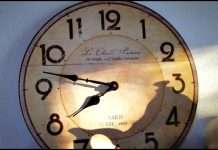
March 11 (UPI) — Sunday morning marks the beginning of daylight saving time, the bi-annual clock changing ritual that has become a point of contention in some states.
Beginning at 2 a.m. Sunday residents across the United States, excluding most of Arizona and Hawaii, will “spring forward” by setting their clocks ahead one hour.
The daylight saving period will continue until Nov. 5 when clocks “fall back” and are set back an hour to repeat the process.
The modern concept of daylight saving time was introduced during World War I when the Standard Time Act was established on March 19, 1918, only to be repealed one year later.
From there, daylight saving was restricted to certain time zones until the Uniform Act of 1966 established a standard throughout the United States.
Contrary to popular belief, the concept was not pitched as a means to help farmers. In fact, most major farm groups oppose daylight saving time because it moves sunrise earlier, giving them less time in the early morning hours to get goods to market.
Instead, daylight saving time was established under the idea that extending summer daylight later into the evening would cause Americans to use less energy.
The U.S. Department of Energy reported a study in 2008 stating that daylight saving time only reduces annual energy use by about 0.03 percent.
Other studies also found that while children get more exercise during daylight saving time, it can have negative health effects, as well.
A study by the University of Alabama Birmingham in 2012 found the time change led to a 10 percent increase in heart attack risk and in 1996 The New England Journal of Medicine reported that an 8 percent increase in traffic accidents the following Monday.
State governments and other groups have made efforts to have the practice overturned via legislation or online petitions.
The Michigan House of Representatives introduced a bill in January, known as HB 4011, that would exempt the state from daylight saving time and put the entire state in the Easter Standard Time Zone.
California Assemblyman Kansen Chu, D-San Jose, also introduced a bill to remove daylight saving time that died on the state Senate floor in 2016.
He brought the idea back once again in 2017 through Assembly Bill 807 that would repeal daylight saving time in California.
Despite moves to get rid of daylight saving times, some legislators would rather hold to old standards.
“I like daylight saving. I just like it,” California Sen. Anthony Cannella, R-Modesto, said when Chu’s original bill died.





